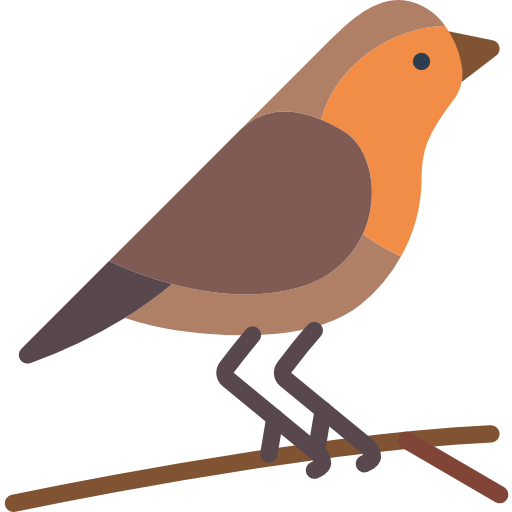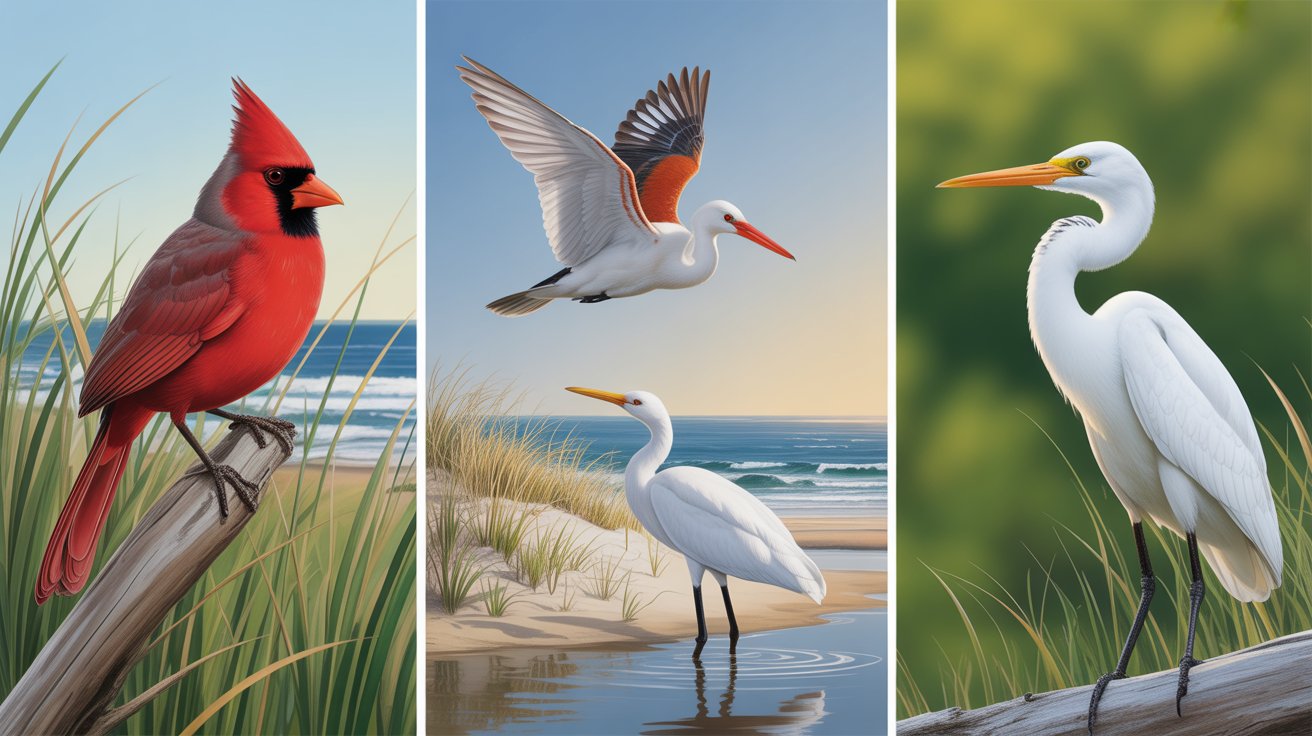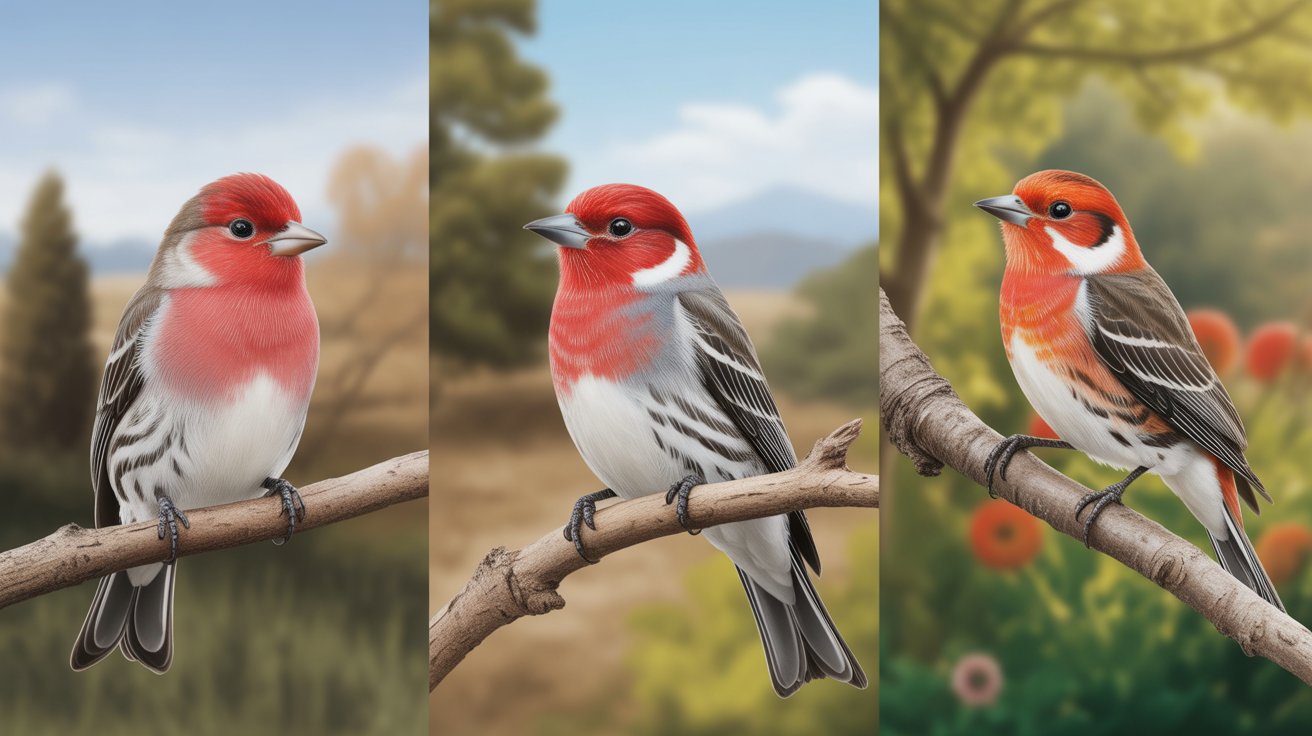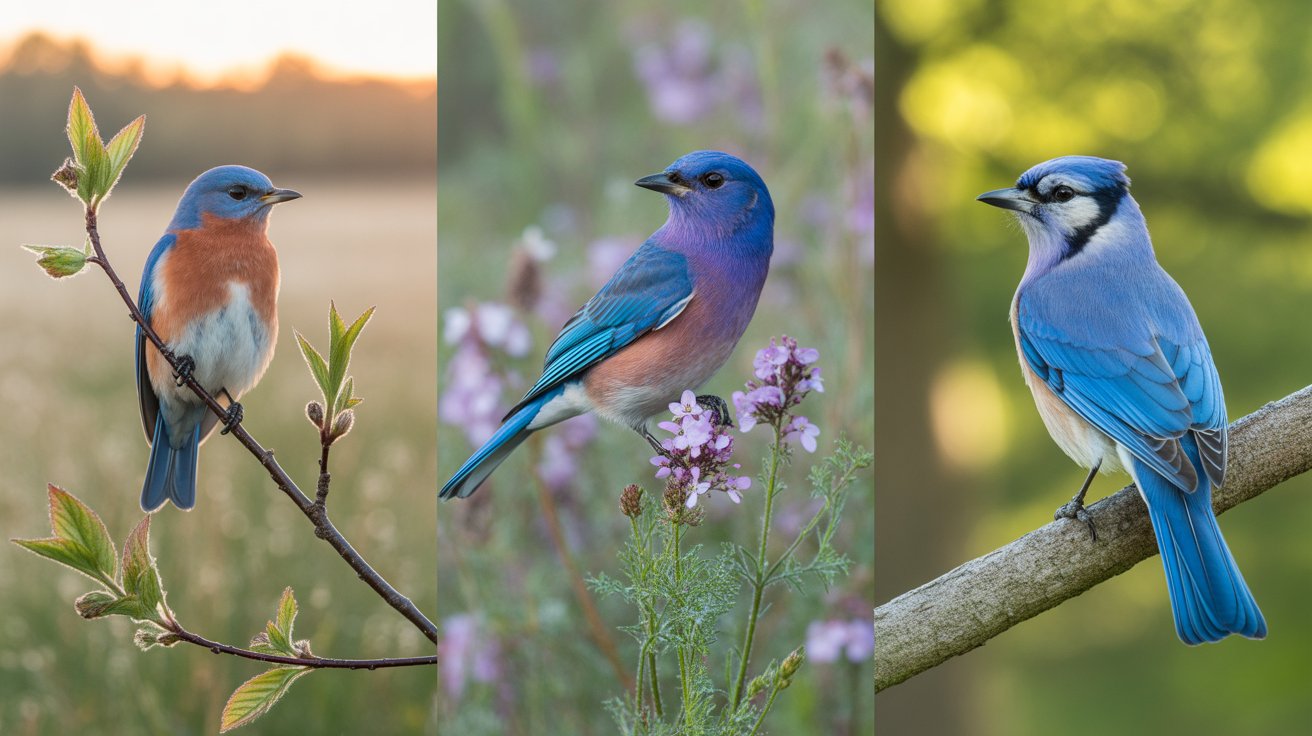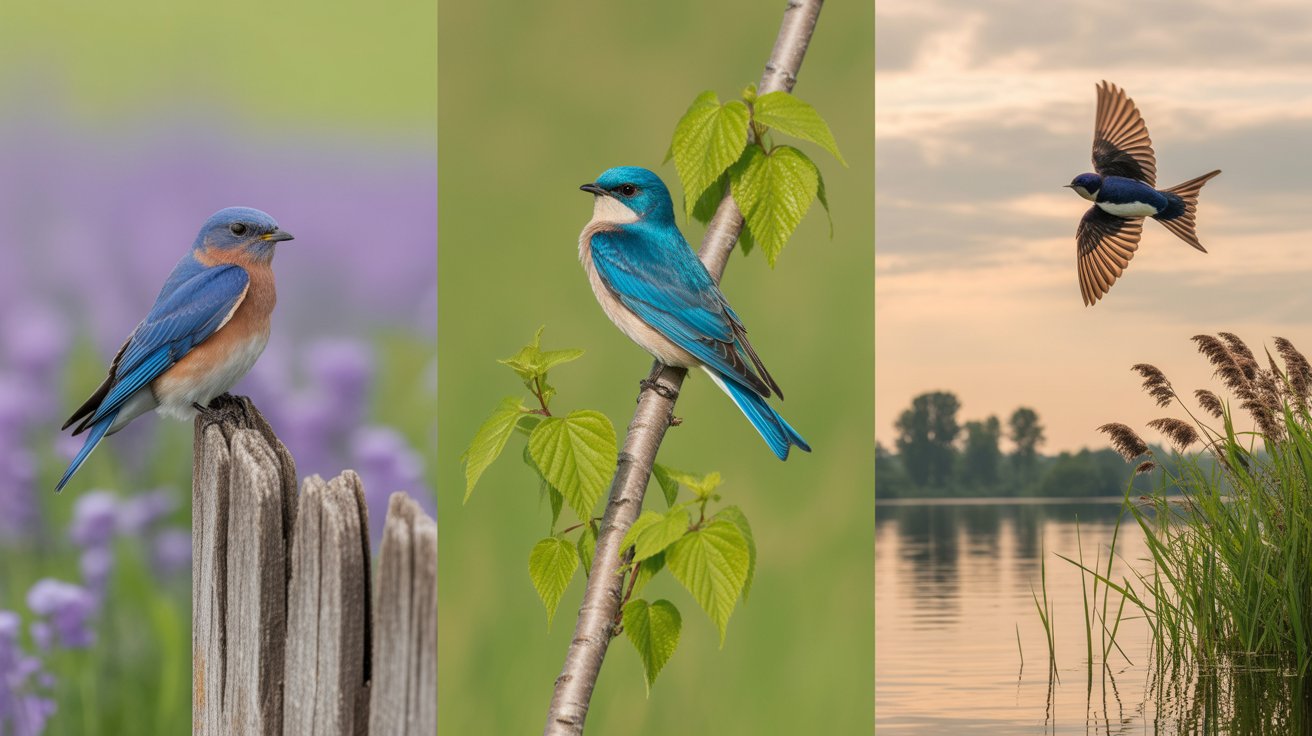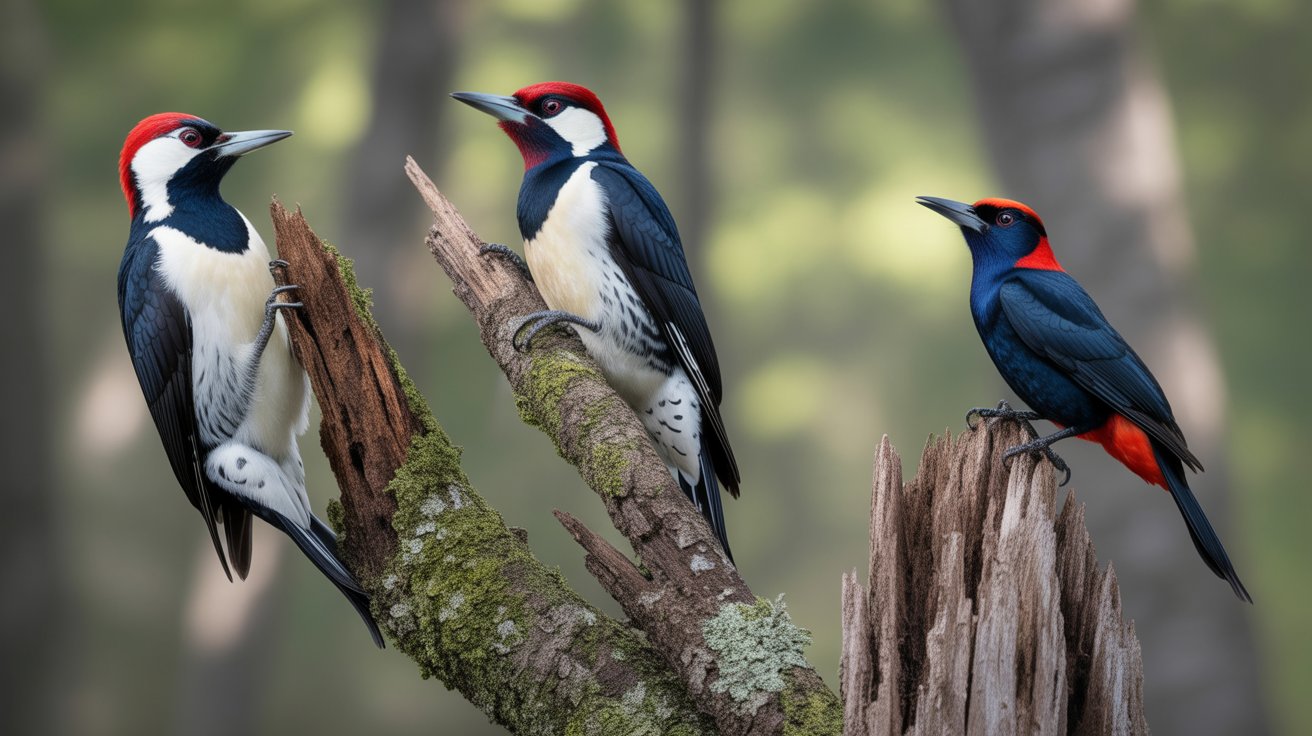If you’re a bird lover exploring Long Island, you’re in for a treat. This region is a vibrant hotspot for birdwatching, offering a variety of habitats that attract an astonishing range of bird species. Whether you’re wandering through its coastal marshes, strolling across forested trails, or gazing over saltwater bays, you’re likely to spot some truly remarkable birds.
Long Island’s unique geography makes it a critical stopover for migratory birds and a haven for year-round residents. From small songbirds to majestic birds of prey, there’s always something to catch your eye—no matter the season. Winter welcomes hardy species like the Snowy Owl, while spring and fall bring colorful warblers and shorebirds in motion.
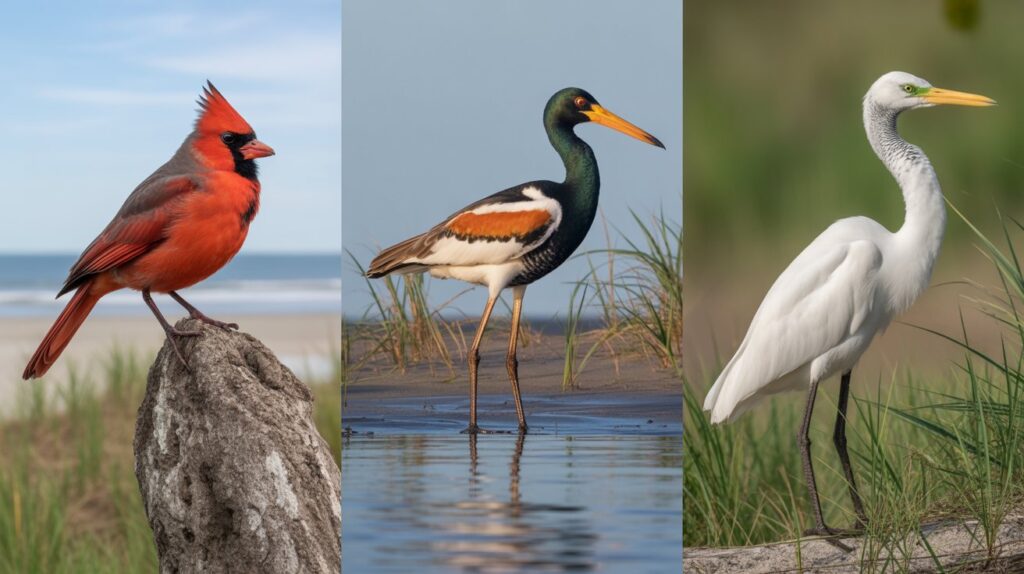
In this guide, you’ll discover 13+ amazing birds commonly found on Long Island. Each bird comes with unique traits, fun facts, and essential identification details to help you recognize them in the wild. So, grab your binoculars and let’s dive into the feathered wonders that call Long Island home.
Contents
- 1. Northern Cardinal
- 2. Great Egret
- 3. American Oystercatcher
- 4. Red-tailed Hawk
- 5. Tufted Titmouse
- 6. Black-capped Chickadee
- 7. Snowy Owl
- 8. Piping Plover
- 9. American Goldfinch
- 10. Blue Jay
- 11. Common Grackle
- 12. Mourning Dove
- 13. Northern Mockingbird
- 14. Downy Woodpecker
- FAQs about Birds of Long Island
- Conclusion
1. Northern Cardinal
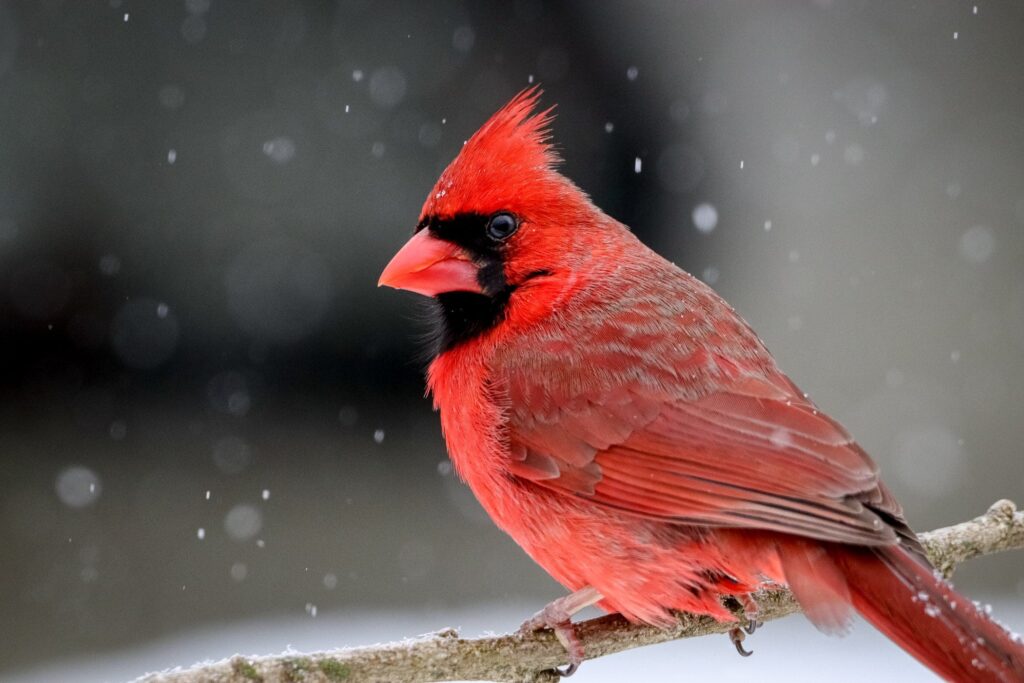
Few birds are as instantly recognizable as the Northern Cardinal. With its striking red plumage and melodic song, this bird is a favorite among Long Island residents and visitors alike. You can often spot them in backyards, parks, and woodland edges.
The male boasts vibrant crimson feathers, while the female displays a more muted brownish-red with orange highlights. Both have a prominent crest and a black mask around the bill.
Key Details:
- Scientific Name: Cardinalis cardinalis
- Wingspan: 25–31 cm
- Length: 21–23 cm
- Weight: 42–48 g
Cardinals are non-migratory, so you can enjoy their presence year-round. Their call, a series of sweet whistles, often announces their territory. You’ll find them near bird feeders, especially if you offer sunflower seeds.
2. Great Egret
The elegant Great Egret is a tall, slender bird often seen wading through marshes, ponds, and tidal creeks of Long Island. Its white plumage glows against the lush wetlands, making it a true standout.
With a long, S-curved neck and yellow bill, this bird is a patient hunter. It stands motionless in shallow water before striking lightning-fast to catch fish or amphibians.
Key Details:
- Scientific Name: Ardea alba
- Wingspan: 131–170 cm
- Length: 80–104 cm
- Weight: 700–1,500 g
Though commonly seen in warmer months, some individuals may linger into winter. Their graceful flight and commanding presence add a touch of beauty to Long Island’s coastal areas.
3. American Oystercatcher
With its bold black and white body and long, bright orange bill, the American Oystercatcher is a stunning shorebird. You’ll often find it along Long Island’s beaches and mudflats, prying open shellfish with surgical precision.
They are most active during low tide when they forage for oysters, clams, and mussels. Their loud, piping calls echo across the salt marshes.
Key Details:
- Scientific Name: Haematopus palliatus
- Wingspan: 71–91 cm
- Length: 40–44 cm
- Weight: 400–700 g
American Oystercatchers are summer breeders in the area, nesting above the high tide line. Their vivid eyes and unique feeding behavior make them a favorite among birders and photographers.
4. Red-tailed Hawk
One of the most widespread raptors in North America, the Red-tailed Hawk is a common sight soaring above Long Island’s fields and highways. Its broad wings and distinctive reddish tail make it easy to identify.
This powerful bird of prey is a top predator, feeding on rodents, rabbits, and even snakes. You’ll often see it perched on utility poles, scanning the ground for movement.
Key Details:
- Scientific Name: Buteo jamaicensis
- Wingspan: 114–133 cm
- Length: 45–65 cm
- Weight: 690–1,460 g
Red-tailed Hawks are year-round residents and often mate for life. Their raspy scream is iconic—commonly used in movies to represent any bird of prey.
5. Tufted Titmouse
Small but full of personality, the Tufted Titmouse is a curious, active bird often seen in Long Island’s woodlands and suburban areas. Its gray back, white belly, and distinctive head crest give it a charming, alert look.
These birds travel in small flocks, often alongside chickadees and nuthatches. They’re inquisitive and frequently visit bird feeders.
Key Details:
- Scientific Name: Baeolophus bicolor
- Wingspan: 20–26 cm
- Length: 14–16 cm
- Weight: 17–26 g
Their whistled “peter-peter-peter” call is easy to recognize, and their acrobatic behavior makes them fun to watch as they hop from branch to branch.
6. Black-capped Chickadee
The Black-capped Chickadee is a cheerful little bird that adds life to Long Island’s forests and backyards. With its black cap and bib, white cheeks, and fluffy appearance, it’s easy to spot and even easier to love.
These birds are known for their friendly nature and curiosity toward humans. They’ll even eat from your hand if you’re patient enough.
Key Details:
- Scientific Name: Poecile atricapillus
- Wingspan: 16–21 cm
- Length: 12–15 cm
- Weight: 9–14 g
Their familiar “chick-a-dee-dee-dee” call is not just charming—it also varies in intensity to warn other birds of danger. These chickadees are active year-round and often cache food for winter.
7. Snowy Owl
Snowy Owls are winter visitors to Long Island, thrilling birders with their majestic presence. With their brilliant white plumage and yellow eyes, these arctic hunters are hard to miss when they perch along beaches and open fields.
They primarily feed on small mammals and birds, using their keen vision and hearing to detect prey even beneath snow.
Key Details:
- Scientific Name: Bubo scandiacus
- Wingspan: 146–183 cm
- Length: 52–71 cm
- Weight: 1,600–2,950 g
Males are whiter than females, who often show dark markings. Snowy Owls are nomadic and appear in irruptions depending on food availability up north.
8. Piping Plover
The endangered Piping Plover is a tiny, sandy-colored bird that nests on Long Island’s beaches. Its camouflage helps it blend into the dunes, where it lays eggs in shallow scrapes of sand.
Despite their small size, they’re fierce defenders of their nests. Conservation efforts are ongoing to protect these birds during breeding season.
Key Details:
- Scientific Name: Charadrius melodus
- Wingspan: 35–41 cm
- Length: 17–18 cm
- Weight: 43–63 g
They emit a soft “peep-lo” call and scurry along the shore in search of insects and marine invertebrates. Watch for roped-off nesting areas in spring and summer.
Great! Let’s continue with the remaining birds, followed by FAQs and the conclusion.
9. American Goldfinch
The American Goldfinch is a bright yellow delight that lights up Long Island’s fields and feeders. Males in summer are a striking canary yellow with black wings and a black forehead, while females and winter males appear more olive-toned.
Their undulating flight and cheerful “po-ta-to-chip” call make them easy to recognize even in motion. They’re especially fond of thistle and sunflower seeds.
Key Details:
- Scientific Name: Spinus tristis
- Wingspan: 19–22 cm
- Length: 11–13 cm
- Weight: 11–20 g
Goldfinches nest later than most birds, timing their breeding with the peak availability of thistle. You’ll see their acrobatic antics in open meadows and backyard feeders throughout spring and summer.
10. Blue Jay
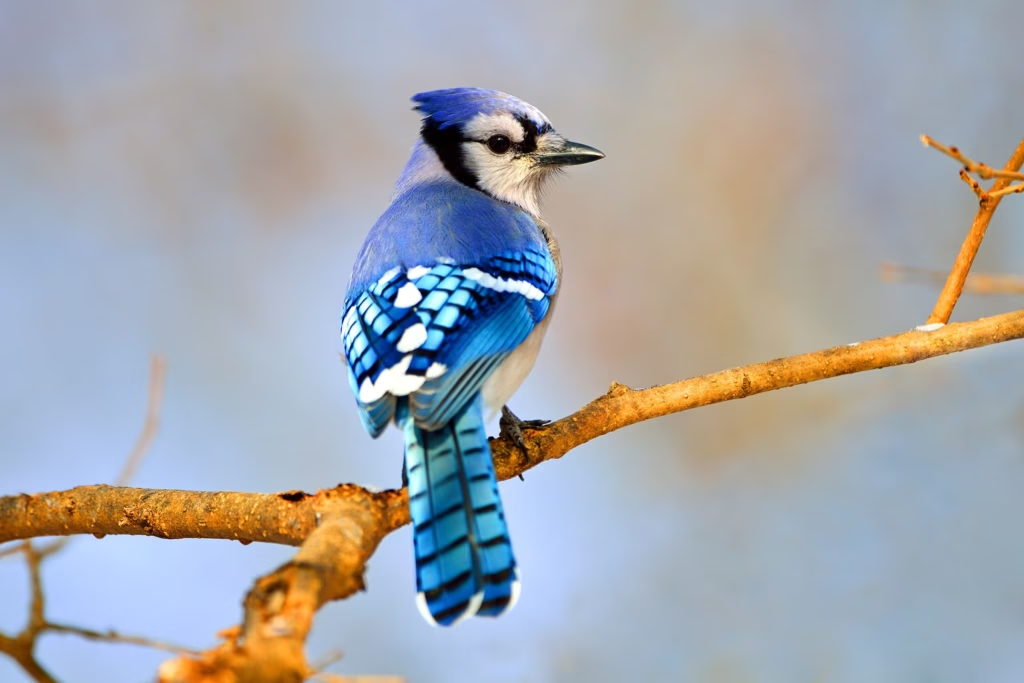
Blue Jays are unmistakable with their sky-blue feathers, black collar, and crest. These intelligent, noisy birds are found across Long Island in forests, parks, and suburban areas.
They often mimic hawk calls to scare off smaller birds and can be aggressive around feeders. But they’re also excellent communicators and family-oriented.
Key Details:
- Scientific Name: Cyanocitta cristata
- Wingspan: 34–43 cm
- Length: 25–30 cm
- Weight: 70–100 g
Blue Jays are year-round residents and hoard food for winter. Their striking color and smart behavior make them a fun species to observe.
11. Common Grackle
Sleek and glossy with iridescent feathers, the Common Grackle is often found in large flocks across Long Island. Though they appear black at first glance, their feathers shimmer in shades of bronze, blue, and purple.
These birds are social and often gather in large groups, especially during migration. They forage on lawns and in agricultural fields, feeding on insects, grains, and even small animals.
Key Details:
- Scientific Name: Quiscalus quiscula
- Wingspan: 36–46 cm
- Length: 28–34 cm
- Weight: 75–140 g
Despite their reputation as pests, grackles are fascinating to watch in the wild. Their piercing yellow eyes and vocalizations are hard to miss.
12. Mourning Dove
The Mourning Dove is a soft, gentle presence in Long Island’s landscapes. With a light brown body, delicate black spots, and a long, tapered tail, it’s a symbol of peace and grace.
Their soft “coo-oo” call resembles a mourning sound, giving the species its name. These doves are common in urban, rural, and suburban areas alike.
Key Details:
- Scientific Name: Zenaida macroura
- Wingspan: 37–45 cm
- Length: 23–34 cm
- Weight: 112–170 g
You’ll often find them perched on telephone wires or foraging on the ground. Mourning Doves are prolific breeders, often raising multiple broods in a single year.
13. Northern Mockingbird
If you hear a bird that sounds like ten birds in one, it’s probably a Northern Mockingbird. This mimic artist is common across Long Island, recognized for its gray plumage, white wing patches, and impressive vocal range.
Mockingbirds are territorial and will defend their nests aggressively—even from humans. They sing both day and night, especially during mating season.
Key Details:
- Scientific Name: Mimus polyglottos
- Wingspan: 31–38 cm
- Length: 21–26 cm
- Weight: 45–58 g
These birds thrive in urban and suburban areas, making them easy to observe. Their repertoire may include songs of other birds, car alarms, or even barking dogs.
14. Downy Woodpecker
Small and agile, the Downy Woodpecker is a regular in Long Island backyards. Males have a small red patch on the back of the head, while both sexes are black and white with a straight bill.
They drum on trees and wooden surfaces to communicate and forage by pecking for insects hidden under bark.
Key Details:
- Scientific Name: Dryobates pubescens
- Wingspan: 25–30 cm
- Length: 14–17 cm
- Weight: 20–33 g
Downies are active year-round and often visit suet feeders. They’re typically found in forests, parks, and orchards, where their rhythmic tapping is easy to hear.
FAQs about Birds of Long Island
1. What’s the best time to go birdwatching on Long Island?
Spring and fall migrations (April–May and September–October) offer peak birdwatching, but Long Island is great year-round with both resident and seasonal birds.
2. Do I need binoculars for birdwatching?
Yes, a good pair of binoculars enhances your experience, especially for spotting distant or small birds like warblers or raptors in flight.
3. Can I attract these birds to my backyard?
Absolutely! Bird feeders with sunflower seeds, suet, and nyjer, along with fresh water, will bring in species like cardinals, goldfinches, and woodpeckers.
4. Are there any protected bird species on Long Island?
Yes, species like the Piping Plover and Snowy Owl are protected and should not be disturbed, especially during nesting season.
5. Where are the best birdwatching spots?
Some top spots include Jamaica Bay Wildlife Refuge, Connetquot River State Park, Wertheim National Wildlife Refuge, and Jones Beach State Park.
Conclusion
Long Island is a birdwatcher’s paradise, offering a delightful mix of habitats and seasons that support an incredible range of bird species. Whether you’re gazing up at a soaring Red-tailed Hawk, listening to the complex song of a Northern Mockingbird, or admiring the peaceful beauty of a Mourning Dove, there’s always something new to experience.
These 13+ birds represent just a fraction of the feathered treasures Long Island has to offer. The more time you spend outdoors—with binoculars in hand or just a keen eye—the more you’ll learn to identify these birds by their colors, songs, and behaviors. And as your appreciation grows, so will your connection to nature.
Whether you’re a seasoned birder or just starting out, Long Island’s avian wonders are always ready to inspire. So take that walk, bring your field guide, and let the birds lead the way.
